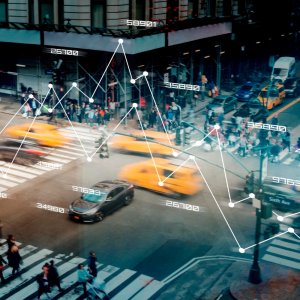Collaboration, Tech the Basis for Building Truly Smart Cities

STORY INLINE POST
On Nov. 15, we hit the 8 billion mark for the number of people in the world. Also, according to the World Economic Forum, 55% of the world’s population lives in urban settings. These figures are overwhelming, and in regard to population, so is the speed with which we achieved it. Just over a decade ago, in 2011, we reached 7 billion. Such rapid population growth increases the demand for housing, services, infrastructure, water, energy, and more at an accelerated pace. But to provide all these sustainably requires better coordination among the public and private sectors.
With these challenges in mind, and after envisioning how data and technology can improve services and people's quality of life, the smart city concept was coined. However, even though the term has been in our vocabulary for some time now, I have realized that it is one that most people claim to understand, but when we dig a little, it becomes evident that everyone sees something different.
As conventional ways of working, mobility patterns, and our sense of connectivity shifted in light of technological development ramping up and the global pandemic, this concept has also changed. More meaningfully, the rapid expansion of 5G and its capacity to connect practically everyone and everything, including machines, devices, and objects, has also come to reconfigure the idea we had of a smart city.
A smart city must seek to engage society in building what's in it through collaborative methods. It must connect infrastructure development with the city hall's plans, while it provides social, economic, and environmental sustainability. Furthermore, it should constantly evolve, predict, and respond to changing needs. Above all, it needs to provide the elements that make the place worth living in.
To achieve all this, which may sound utopian, it is essential to work across sectors, disciplines, and systems, leveraging data and technology to control the city's assets better and consequently deliver superior services and quality of life.
Powering Collaboration via Digital Project Delivery in Construction
Building Information Modeling (BIM) is the process of creating and managing information for an asset. It has been the foundation of digital transformation in the architecture, engineering, and construction (AEC) industry. But this model not only provides valuable information during the construction process of the asset. It is also a great source of information for the ongoing operation and maintenance of the infrastructure.
Digital project delivery is a way of working in which construction projects are conceived, planned, designed, built, and operated in an interactive digital space that all stakeholders can access. As projects continue to generate data, it keeps gaining prominence. This shared data language is structured and streamlined for real-time collaboration, enabling data-driven decision-making and mitigating project risks.
The AEC industry continues to move from a file digital delivery process to being data- and platform-based, which allows us to unlock the value of the data. Effective use of data then translates into better insights, leaner operations, increased transparency, smarter decisions, and a more straightforward path to sustainability. In a nutshell, digital project delivery becomes essential not only for the AEC industry, but also for the future of smart cities.
Driving Innovation Through Complementary Technology
Digital technologies provide the capacity to track demand, mobility, and functionality to explore better ways of doing things. To produce, track, and store power.
Nevertheless, to make better decisions that contribute to sustainably solving real-world problems, it is necessary to analyze this information in the context of other infrastructures, buildings, and systems. Hence the growing interest in integrating BIM with geographic information systems, also known as GIS.
The idea of integrating both methodologies is to create systems where information is live and seamlessly integrated, allowing all stakeholders to consult it in real-time throughout all the asset's stages, including planning, design, construction, and operation, to make better decisions and ultimately reduce risks, inefficiencies, and cycle times.
Through our customers, we at Autodesk are witnessing that the integration of BIM and GIS brings benefits throughout the life cycle of the asset. Plus, the complete visualization of a project in the actual context is not only to the benefit of the construction company or asset owner. It also helps the community to better understand the project being developed and contributes to the asset’s adaptability in the future.
Amid an excessive use of the term smart city, often used more as a marketing term to promote a town, let’s remember that its ultimate goal is to improve people's lives by connecting, protecting, and enhancing them. To achieve that, it’s essential that its citizens continuously challenge themselves to find better ways of doing things, from an environmental, social, and economic perspective. The basis is collaboration and the use of technology to enable greater asset use and acquiring flexibility and agility. Above all, let’s keep in mind that when becoming smart, technology is the means and not the end.








 By Marie-Pierre Mercier | Country Director -
Mon, 02/20/2023 - 13:00
By Marie-Pierre Mercier | Country Director -
Mon, 02/20/2023 - 13:00
















